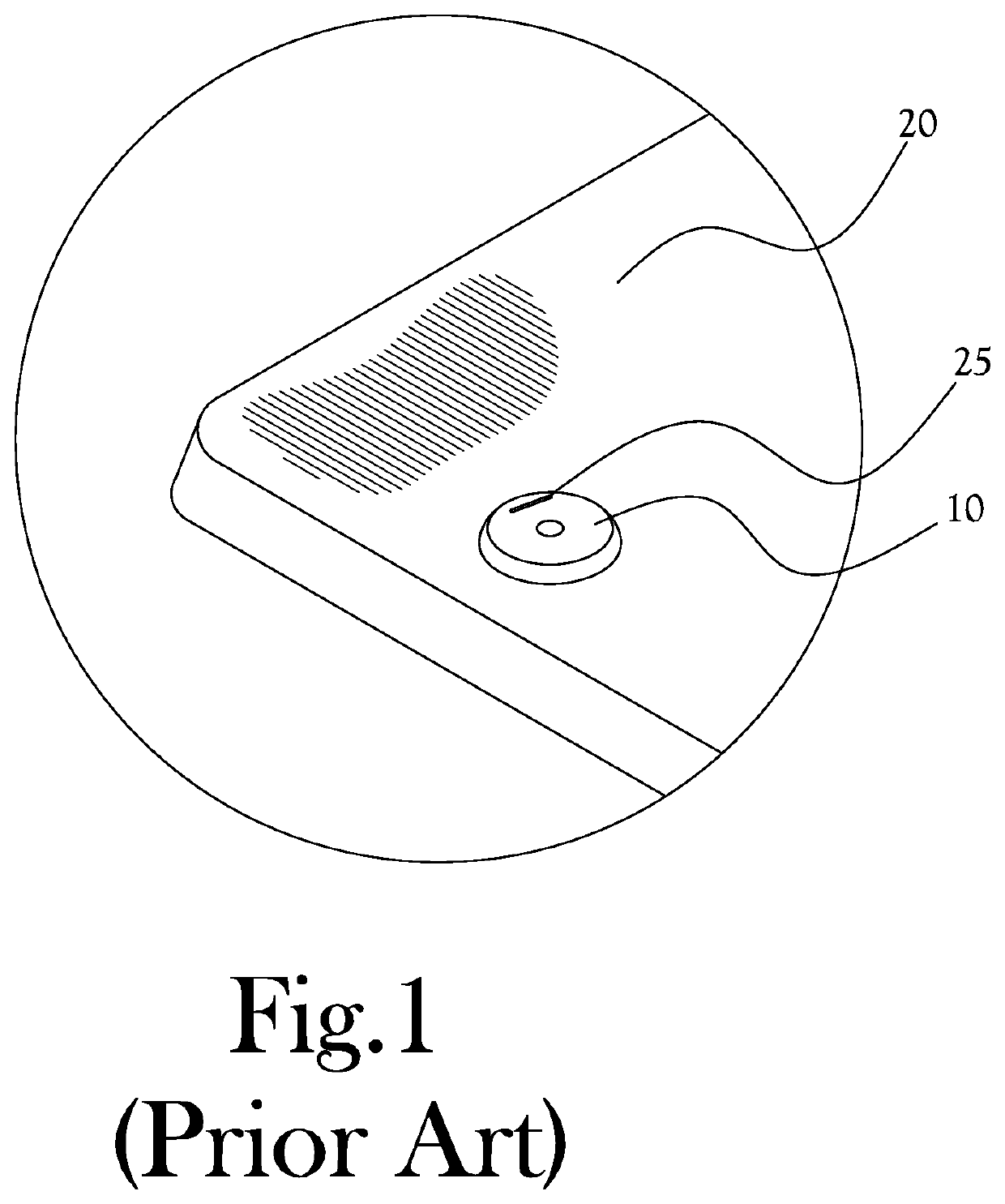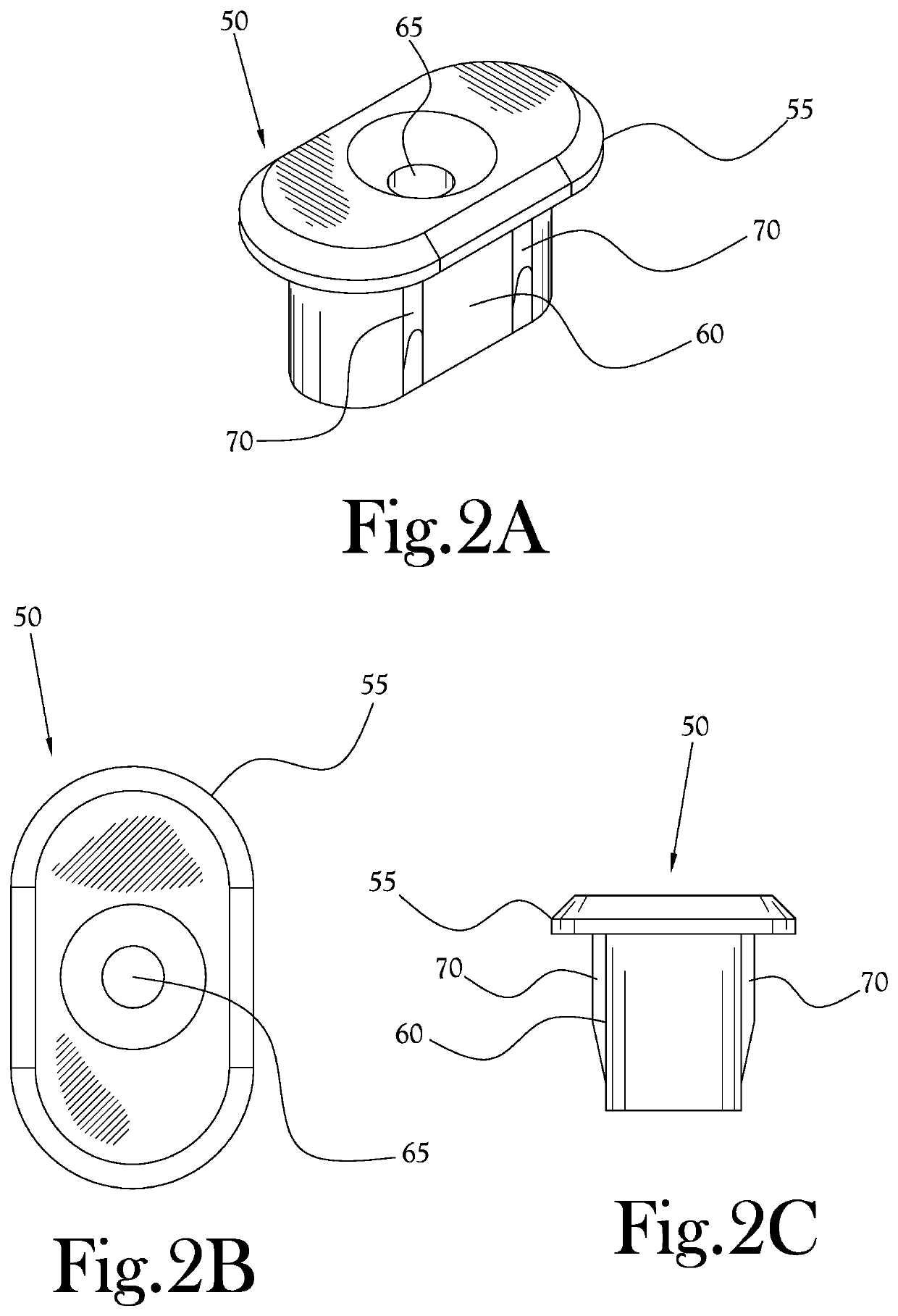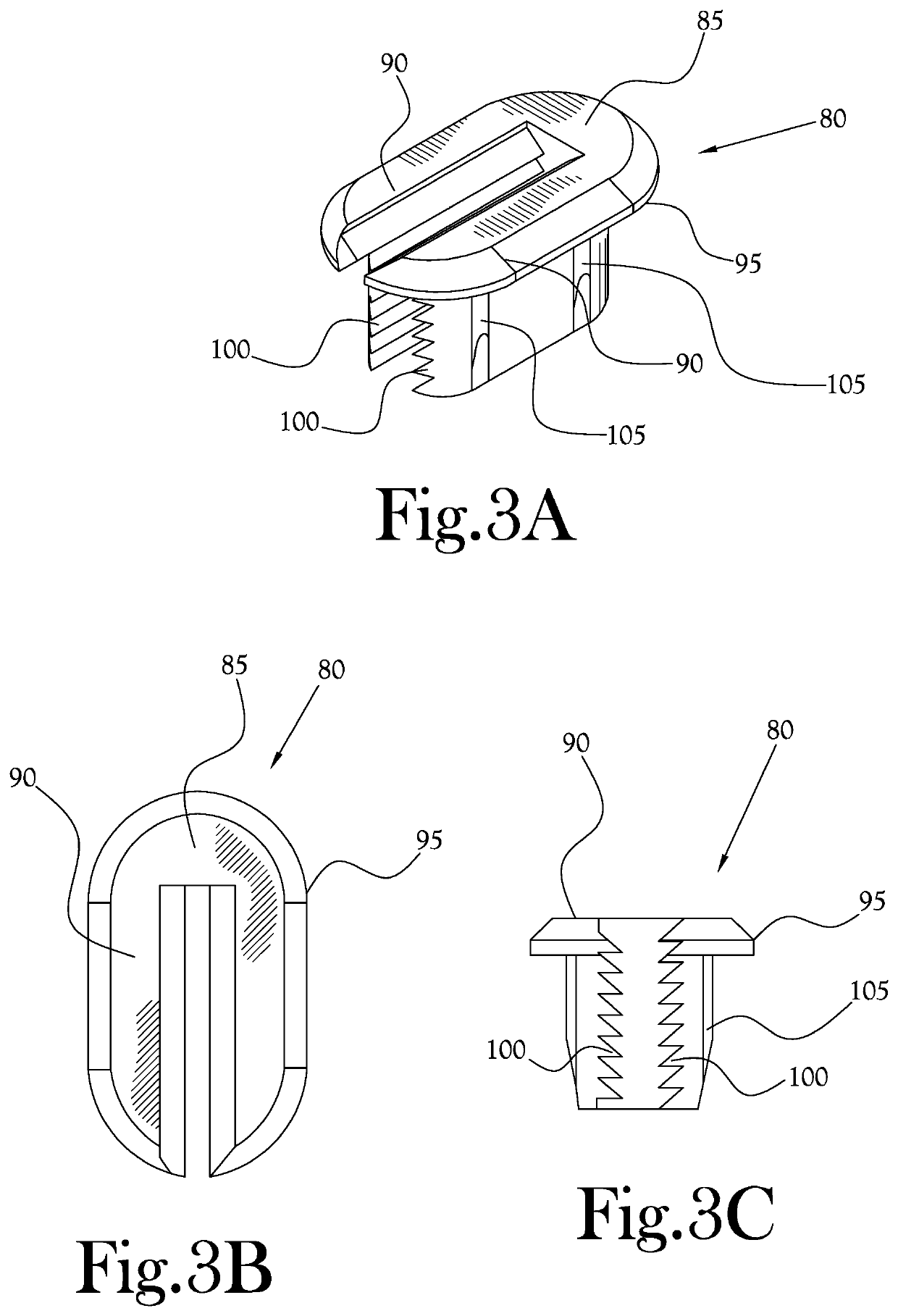Non-Rotating T-Nut and Screw Catch for Use in a Chair Panel and Method for Using the Same
a technology of screw catches and t-nuts, which is applied in the direction of screws, threaded fasteners, furniture parts, etc., can solve the problems of high torque pressure on the plastic t-nut, delay and additional expense, and achieve the effect of eliminating a manufacturing step, reducing materials, and saving time and money
- Summary
- Abstract
- Description
- Claims
- Application Information
AI Technical Summary
Benefits of technology
Problems solved by technology
Method used
Image
Examples
Embodiment Construction
[0018]FIG. 1 illustrates a traditional prior art T-nut 10 utilized in the manufacture of the upholstered seat back panels of a frame chair 15, especially a metal frame chair. While such upholstered panels are found in both the vertical seat back portion and the horizontal seat support section portion of metal frame chair 15, the present description makes specific reference to the inside seat back panel 20 and the outside seat back panel 30 that make up the upholstered back portion of metal frame chair 15 illustrated in FIG. 5. Plastic T-nuts, such as traditional T-nut 10, in this field are typically used with a sheet metal type screw 35. The screw 35 cuts its own treads into the plastic material as the screw 35 is driven into traditional T-nut 10 by powered screw drivers. This action creates high torque pressure on the plastic T-nut 10. In order to prevent the plastic T-nut 10 from spinning as the screw 35 is driven, the plastic T-nut 10 is typically stapled with staple 25 to the in...
PUM
 Login to View More
Login to View More Abstract
Description
Claims
Application Information
 Login to View More
Login to View More - R&D
- Intellectual Property
- Life Sciences
- Materials
- Tech Scout
- Unparalleled Data Quality
- Higher Quality Content
- 60% Fewer Hallucinations
Browse by: Latest US Patents, China's latest patents, Technical Efficacy Thesaurus, Application Domain, Technology Topic, Popular Technical Reports.
© 2025 PatSnap. All rights reserved.Legal|Privacy policy|Modern Slavery Act Transparency Statement|Sitemap|About US| Contact US: help@patsnap.com



